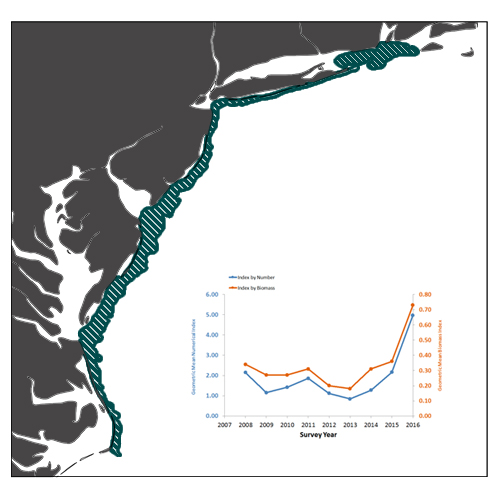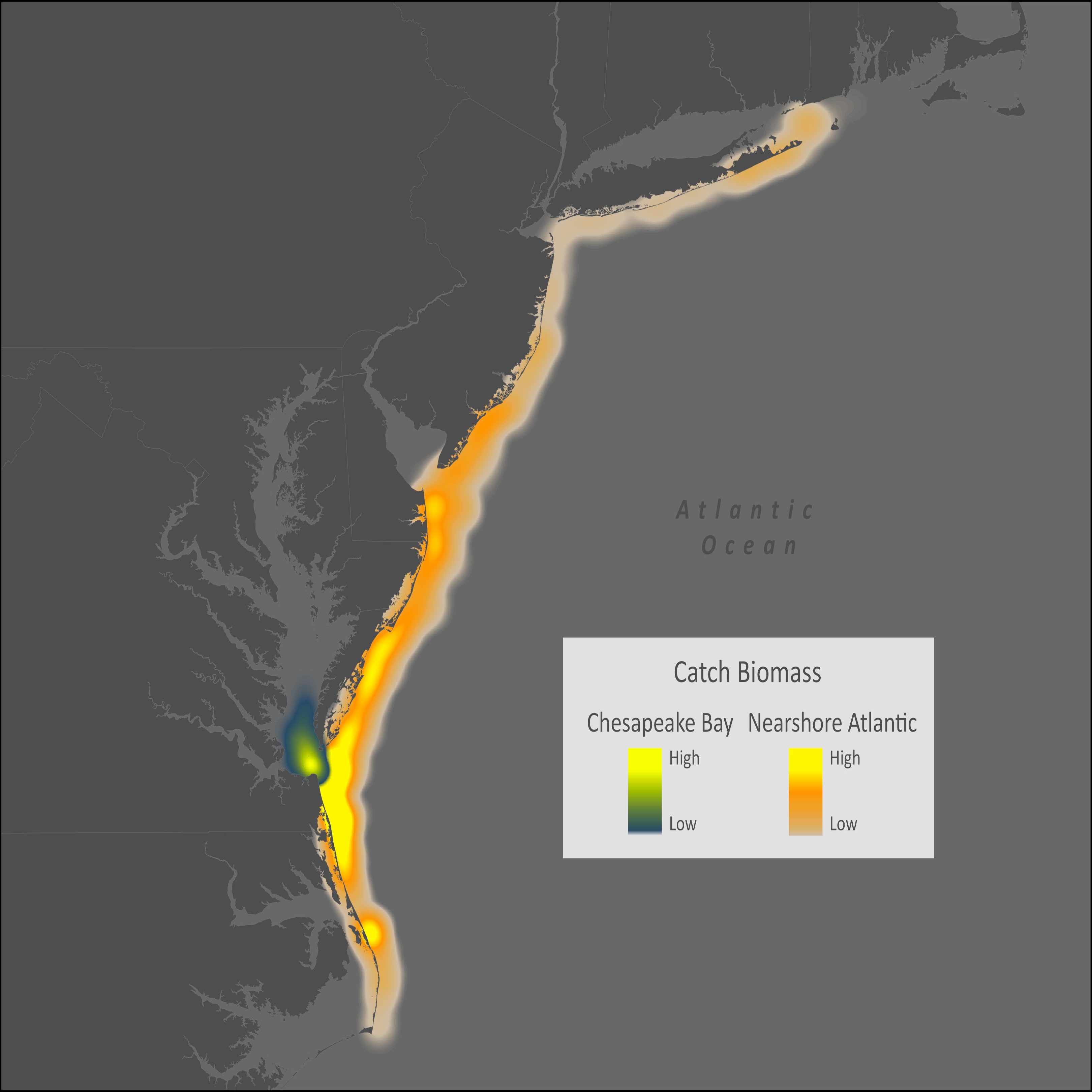Clearnose Skate - Raja eglanteria
*Information from FAO Species Identification Guide Western Central Atlantic*

Size
Maximum to 79 cm total length and 52 cm width; common to about 70 cm total length in area.
|
Diagnostic characters:
Disc rhombic, about 1.2 to 1.3 times as broad as long; snout moderately projecting; anterior angle of snout 90 to 110 degrees; anterolateral margin of discstraight to slightly concave opposite spiracles; outer corners of disc abruptly rounded; posterior corners of disc broadly rounded. Snout moderately
long, preorbital length 14 to 15% total length. Mouth straight to slightly arched; teeth arranged in 46
to 54 rows in upper jaw. Pectoral-fin radials extend slightly anterior to midlength of snout. Anterior pelvic-fin lobe connected to posteriorlobe by membrane, and anteriorlobe about 50% length of posterior lobe. Tail about 50% total length, lateral tail fold well developed and extending from tip of posterior lobe of pelvic fins to near tip of tail; dorsal fins of similar shape and size and separated by space equal to about 1/4 length of base of first dorsal fin. Denticles in band along anterior margin of disc and over much of remainder of disc; thorns in crescent-shaped arc along inner margin of orbits and spiracles; continuous row of thorns from nuchal region to first dorsal fin; 1 to 5 scapular thorns, not arranged with nuchal thorns in triangular patch; lateral and often parallel rowof thorns on each side of tail; 1 or 2 thorns between dorsal fins. Precaudal vertebrae number 33 to 35, predorsal caudal vertebrae number 56 to 59, pectoral-fin radials
number 81 to 82. Colour: upper dorsal surface light brown with dark brown to black spots and bars;
area on either side of snout semitransparent; ventral surface white. Individuals from the southern part of the range blunter snouts, a less distinct colour pattern, and mature at a smaller size than those from the northern part of the range and may represent a separate species.
|
Habitat, biology, and fisheries
This species occurs from the shore zone to 119 m at temperatures from 5 to 27° C but it is most common between the shore and 111 m at 15 to 25° C in area. Occasionally found in estuaries but not in fresh water. Food consists mainly of decapod crustaceans, bivalves, polychaetes, squids, and ray-finned fishes. Exploited in the southeastern USA, but separate statistics are not reported for this species. Caught mainly with bottom trawls. Marketed fresh and salted; also used for bait.
|
Distribution
Western Atlantic coast of USA from Massachusetts and occasionally from Gulf of Maine, bordering Florida and throughout northern Gulf of Mexico to northern Tamaulipas state, Mexico.
|







